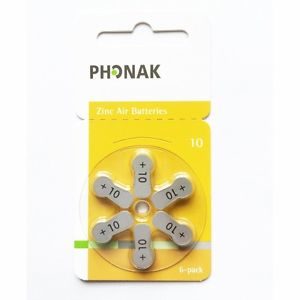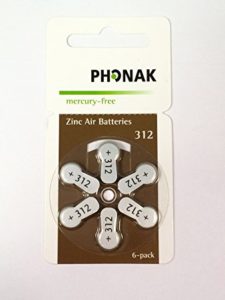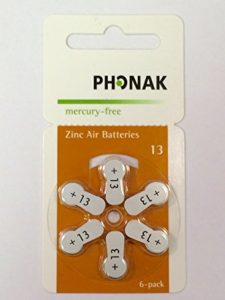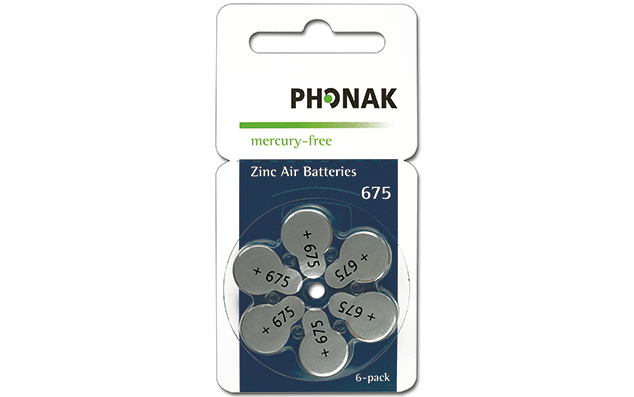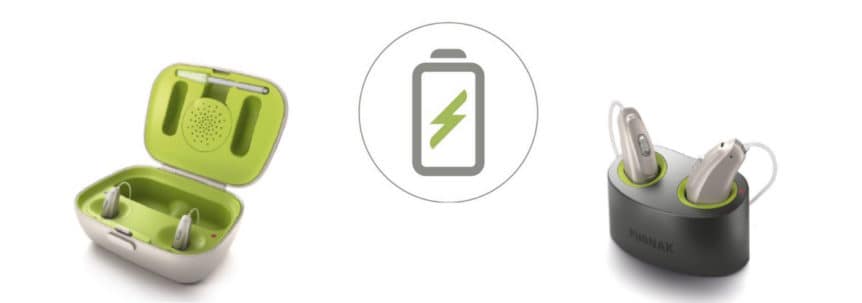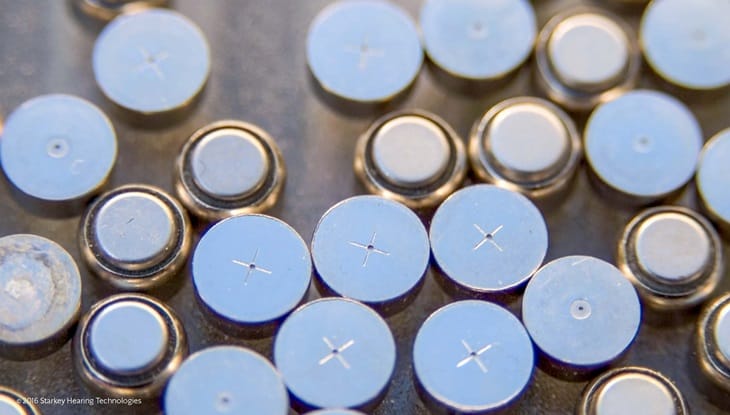
Hearing aid batteries come in several different sizes. Because the batteries are small and hard to identify by size alone, they can easily be identified by their color-coded packaging. Manufacturers are required to use specific colors, so instead of straining your eyes to look at the size, you only need to remember the color.
Types of Hearing Aid Batteries
Common battery types include:
Size 10 batteries
Size 10s are 5.8 mm wide by 3.6 mm high. They can easily be identified by the yellow label on the packaging. The average lifespan for size 10 batteries is three to seven days. These batteries typically power smaller hearing aids.
Size 312 Batteries
Size 312 is the most common hearing aid battery in the U.S. They are 7.9 mm wide by 3.6 mm high and last about last three days to 10 days. They have a brown label. The reason size 312 batteries are most common is because they are compatible with the most hearing aids.
Size 13 Batteries
Size 13s last six to 14 days and are 7.9 mm by 5.4 mm. This battery is clearly identified by a bright orange label and is typically used to power behind-the-ear (BTE) hearing aids.
Size 675 Batteries
These batteries have a blue label and are 11.6 mm wide by 5.4 mm high. Size 675 batteries last the longest amount of time, nine to 20 days. They typically power BTE hearing aids.
Rechargeable Hearing Aid Batteries
Among the latest hearing aid technologies are rechargeable batteries. Rechargeable hearing aid batteries are available for a variety of battery sizes and come color coded the same as single-use batteries. While more expensive than single-use batteries, rechargeable varieties can be charged up to 600 times, making them a popular, cost-effective choice.
Reducing Battery Drain
While there is no way to extend battery life, you can make sure you get the most life possible from the batteries. Below are a few tips for taking care of your hearing aid batteries.
- Do not remove the plastic tab on the back of the battery until you are ready to use it. Removing the tab is the equivalent of starting the battery.
- Before you replace your battery, make sure to wash your hands thoroughly because any dirt or grease that comes in contact with the new battery may damage it and the hearing device. Before inserting your batteries, allow one minute to pass after you remove the tab so the battery to take in oxygen to power up.
- Opening the battery door at night will minimize battery drain and allows moisture collected during the day to evaporate. If you do not plan to use your hearing aids for an extended amount of time, you should remove the battery entirely to reduce drain.
Batteries are one of the most important parts of your hearing aid. The hearing aid is useless without it! If you have any questions about your hearing aids contact your trusted hearing professional at one of our 13 Whisper Hearing Center locations.

